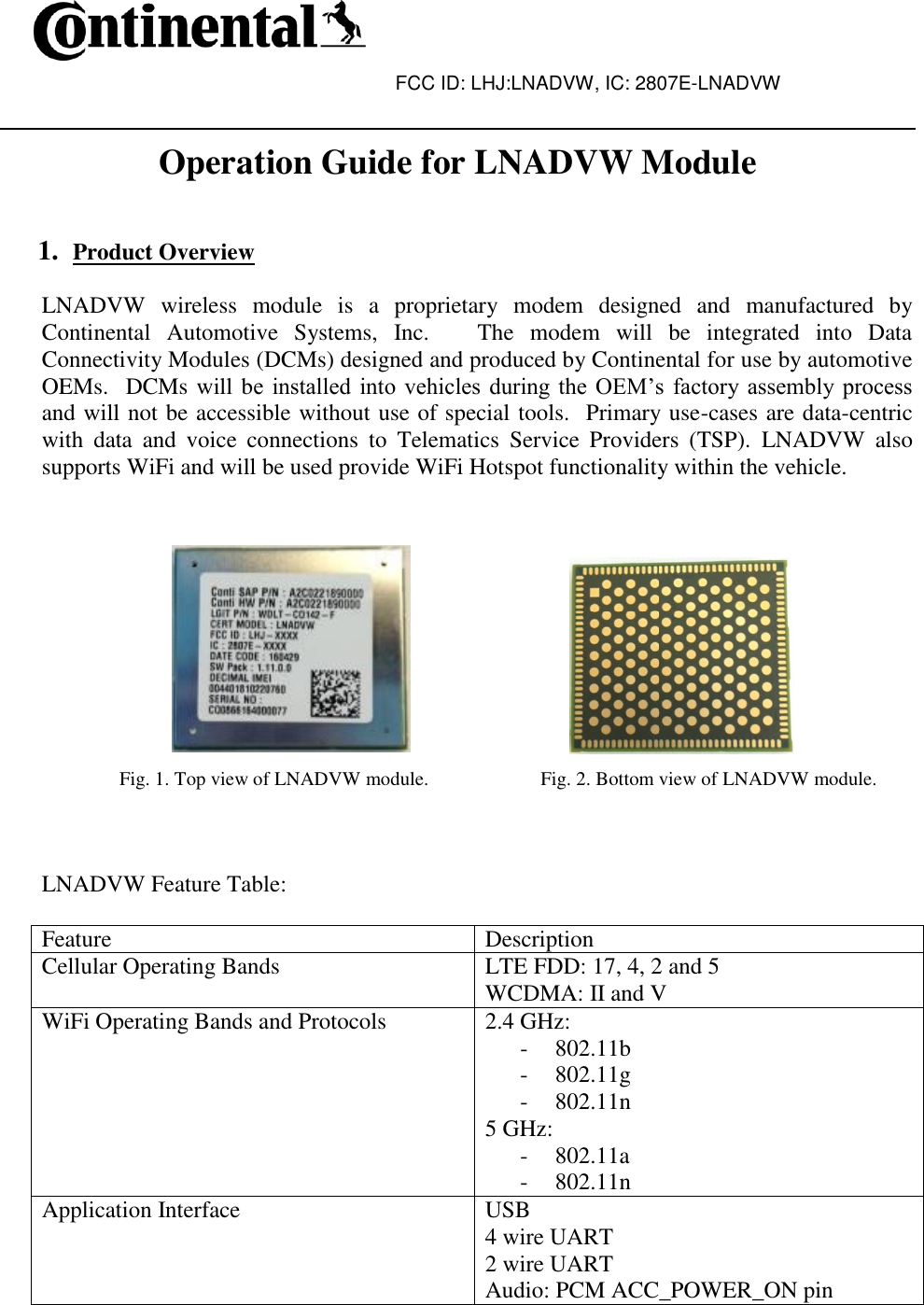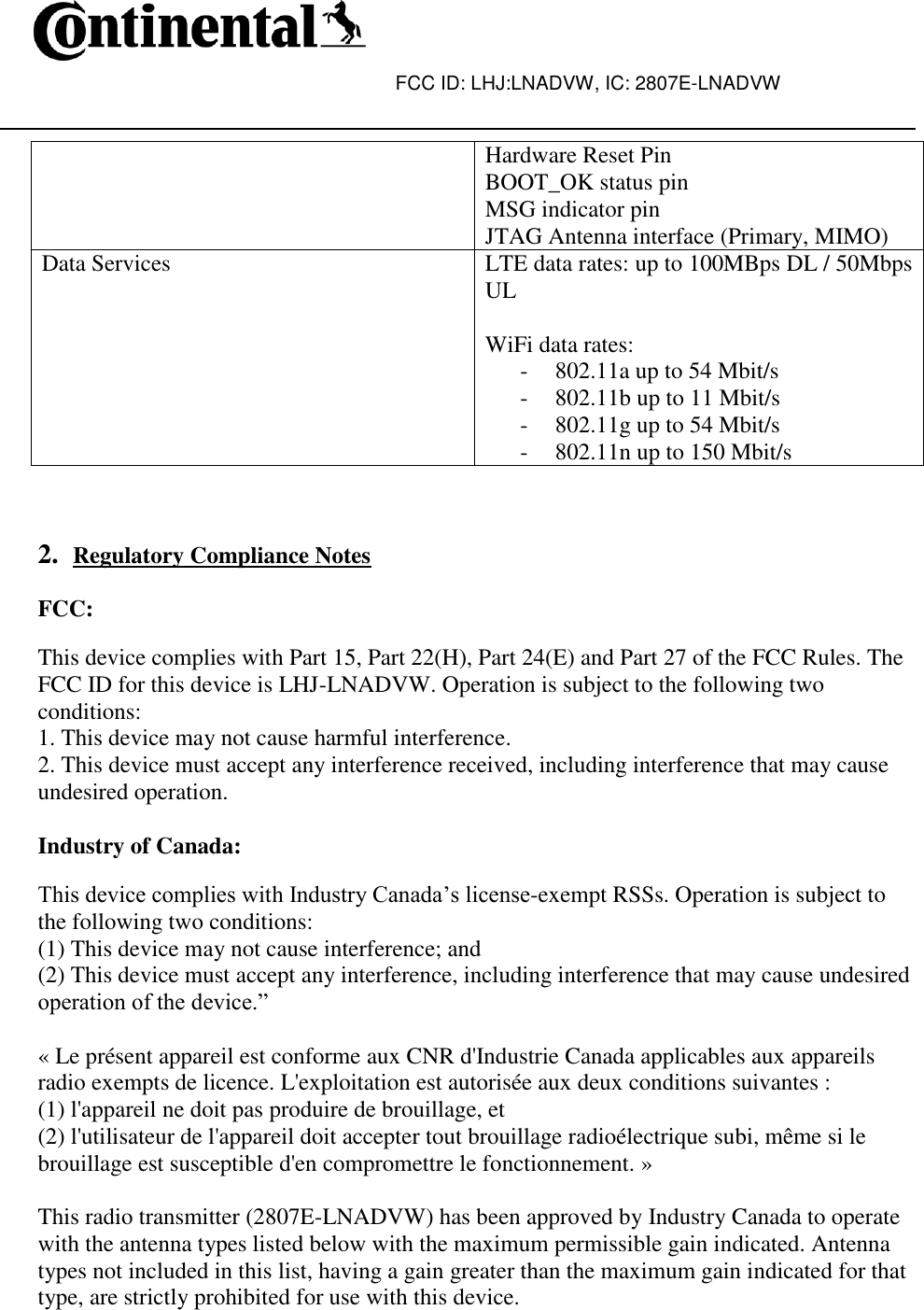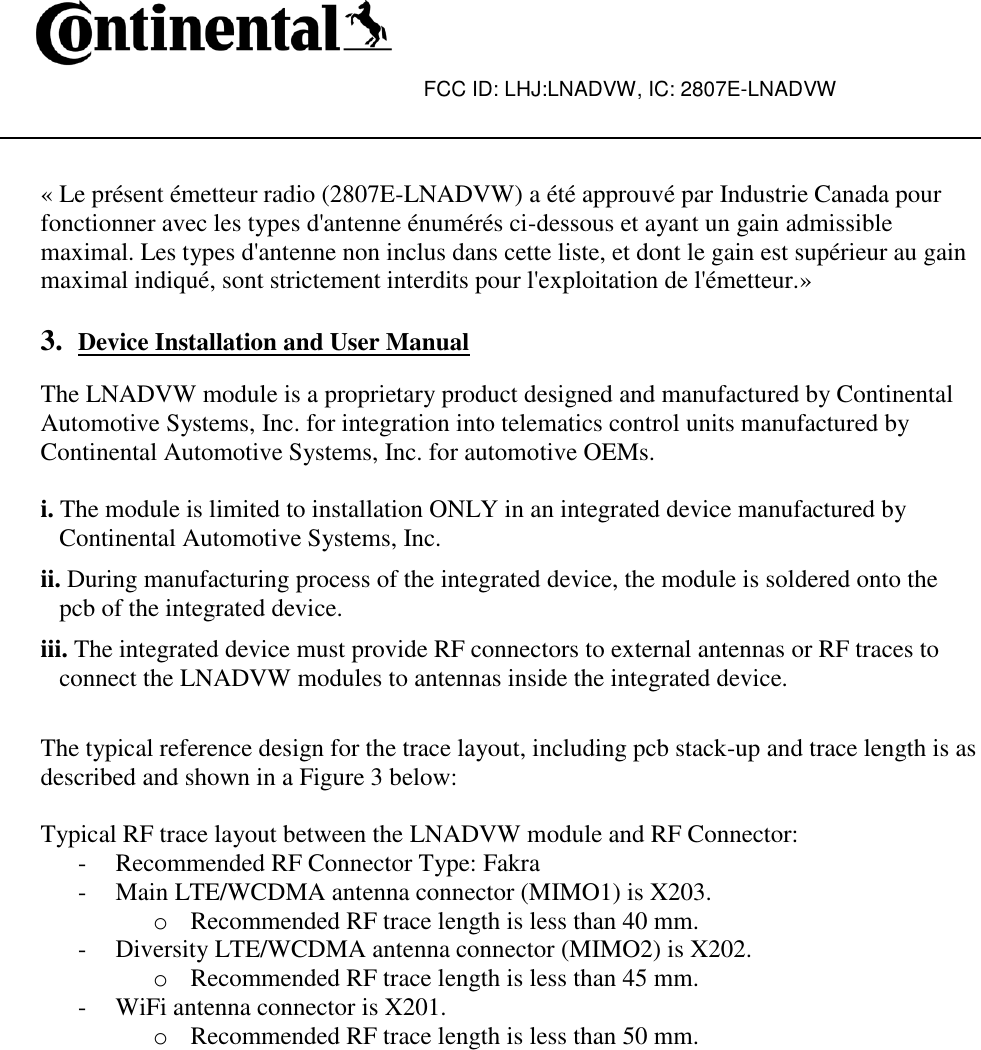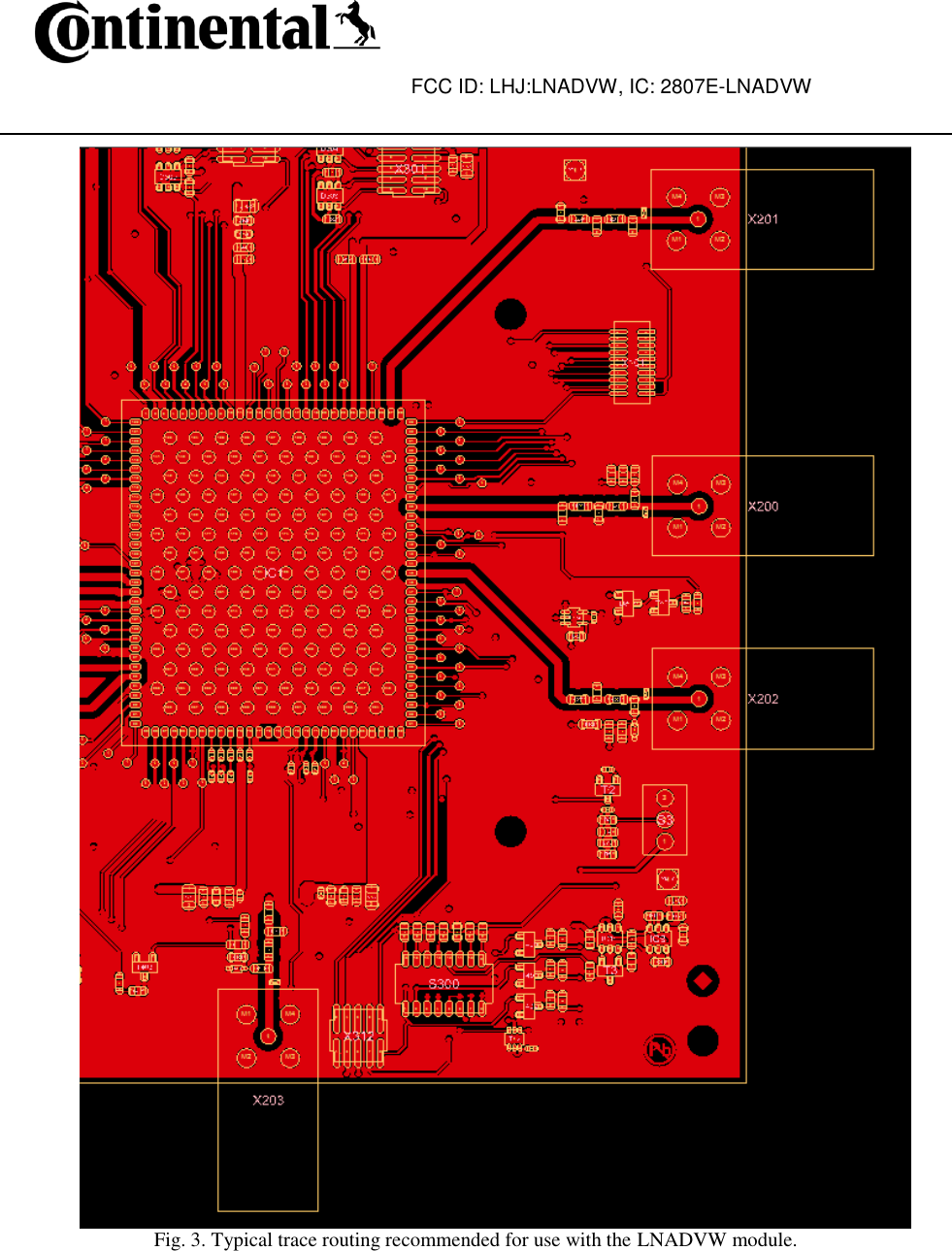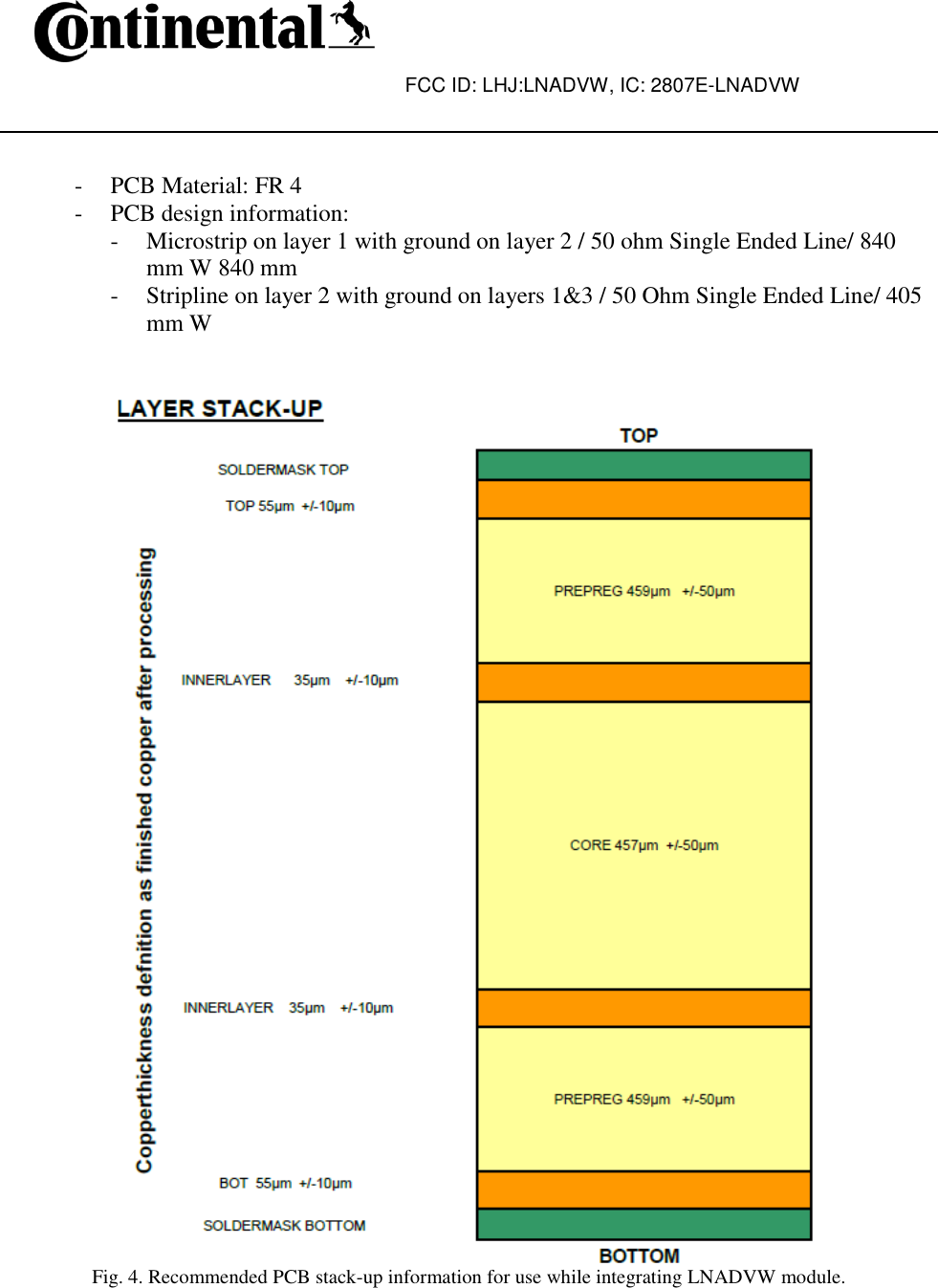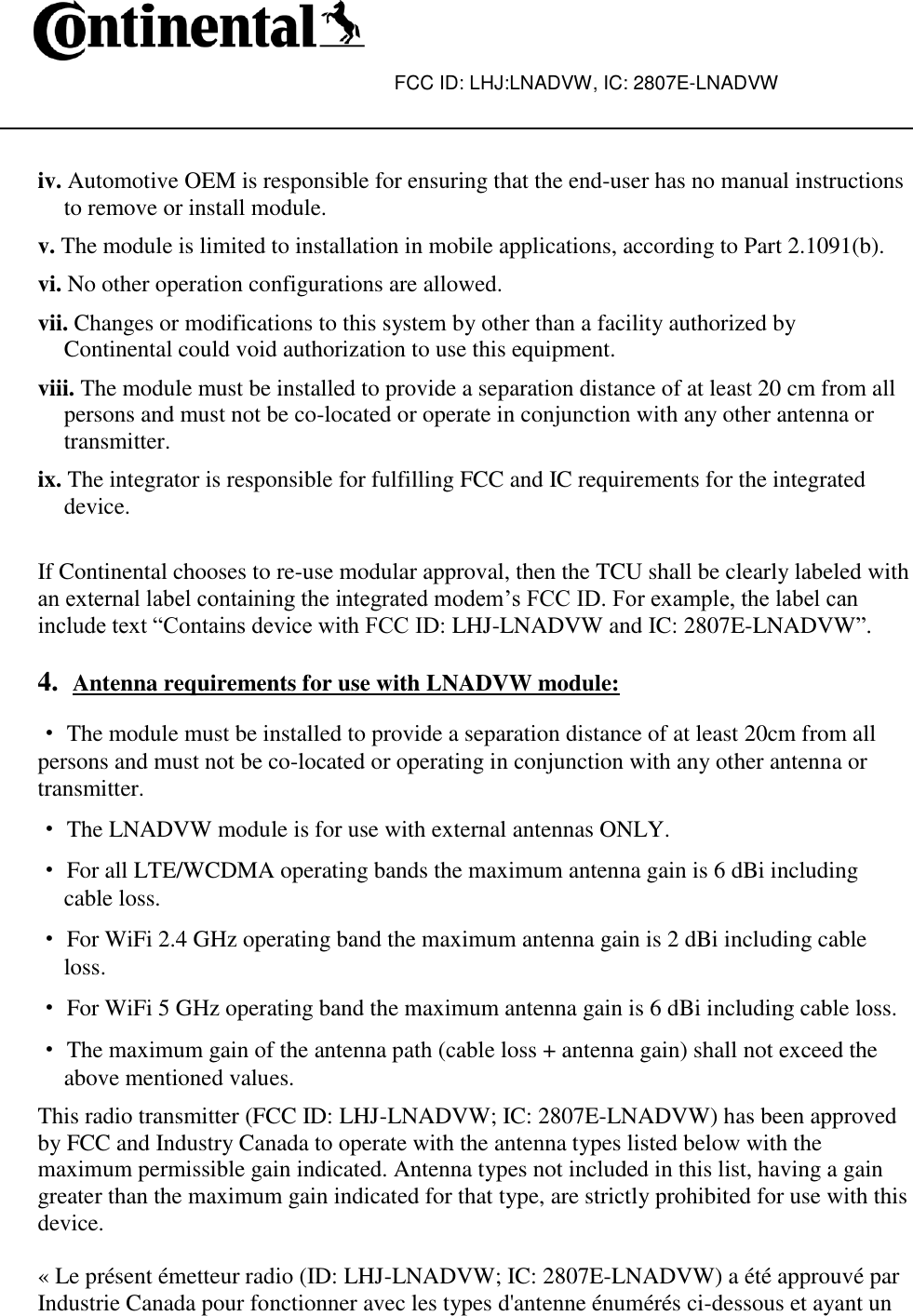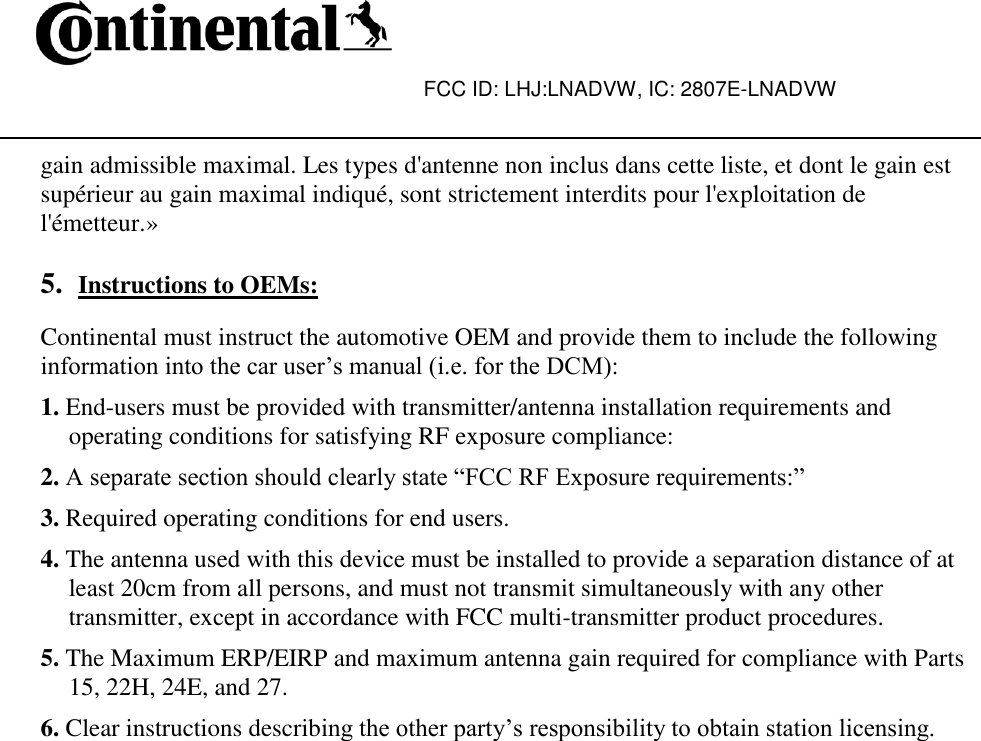Continental Automotive Systems LNADVW Module with Multi-Band LTE, WCDMA, 2.4/5GHz WLAN User Manual Revision History Table
Continental Automotive Systems, Inc. Module with Multi-Band LTE, WCDMA, 2.4/5GHz WLAN Revision History Table
Contents
- 1. User Manual
- 2. Users Manual
User Manual
